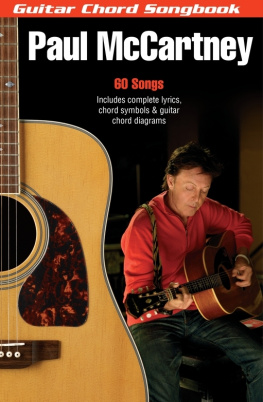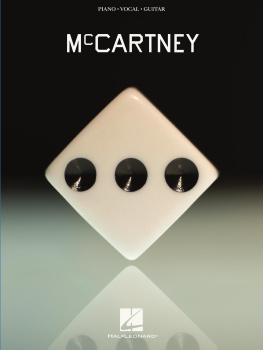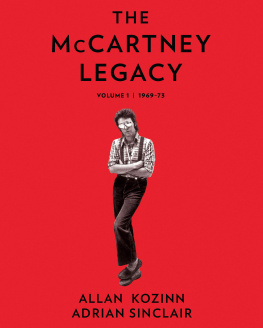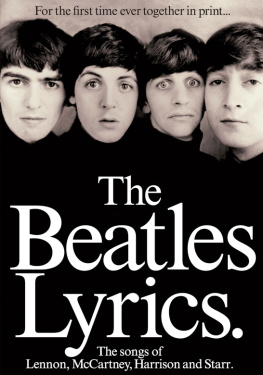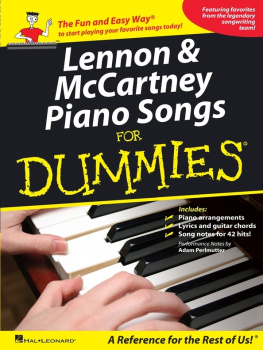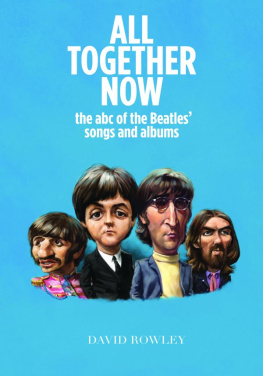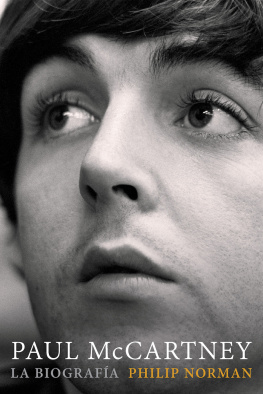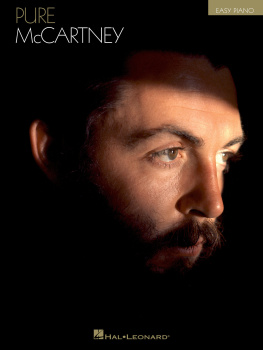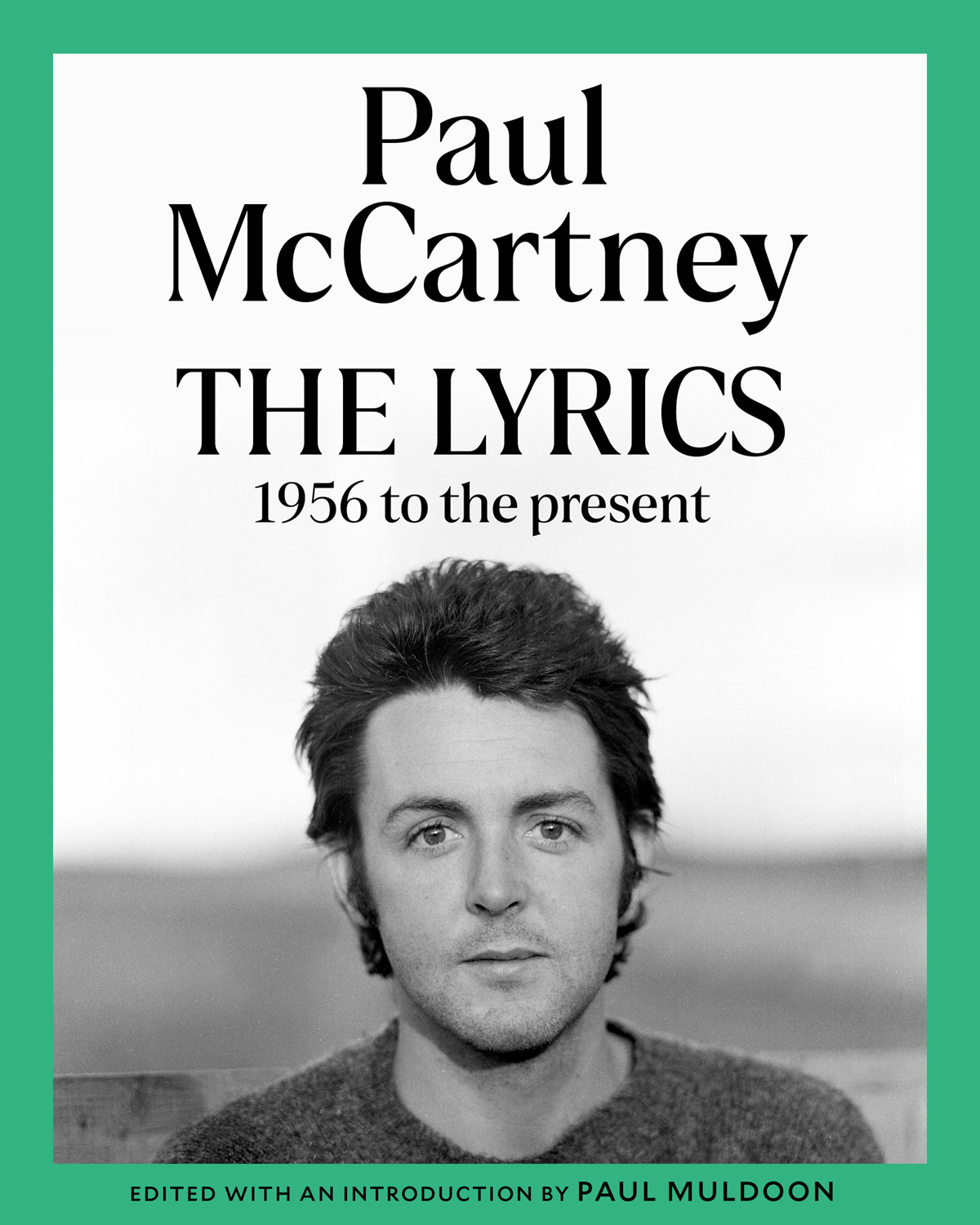A Division of W. W. Norton & Company
To thine own self be true.
Foreword
by Paul McCartney
M ORE TIMES THAN I CAN COUNT, IVE BEEN ASKED TO write an autobiography, but the time has never been right. Usually I was raising a family or I was on tour, which has never been an ideal situation for long periods of concentration. But the one thing Ive always managed to do, whether at home or on the road, is write new songs. Some people, when they get to a certain age, like to refer to a diary to recall day-to-day events from the past, but I have no such notebooks. What I do have is my songs hundreds of them which serve much the same purpose. And these songs span my entire life, because even at the age of fourteen, when I acquired my first guitar in our little house in Liverpool, my natural instinct was to start writing songs. Since then Ive never stopped.
Theres a whole process to learning songwriting, but its different for different people. For me, the first thing was to copy other people, like Buddy Holly and Little Richard and Elvis, who, I later heard, didnt even write his own songs. It meant memorising their songs, learning the standards of early rock and roll, but in my early to mid-teens it occurred to me to try writing my own. Id start off with the very simplest idea, and Id see what came out.
The earliest lyrics in this book are the words to I Lost My Little Girl. I wrote them just after the death of my mother. She was only forty-seven; I was fourteen. Even as early as 1956, when I wrote the song, a musical direction was emerging: you can hear that the chord sequence descends, and the melody or the vocal ascends. Im already playing with little musical things, very simple things, which fascinated me even though I did not know quite what they were. Whats astonishing is that John Lennon, at the home of his Aunt Mimi, was doing something similar. So when we first came together and showed each other what wed written, we quickly realised that we were both fascinated by songwriting and that by working together, we could take things a lot further.
In our early attempts you can tell we were kids. We werent really conscious then of the act of songwriting. But when we started The Beatles, we realised we suddenly had an eager audience. So at first we were writing with this audience, mainly young girls, in mind. Early songs like Thank You Girl or From Me to You or Love Me Do were aimed at our fans, though many were based on our personal stories. We knew that these songs might become hits, and we could have continued writing songs like those forever. But as we matured, we became aware that we could take songwriting in other directions, often to another level, which meant writing songs for ourselves.
Of course, we had to maintain a delicate balance between songs that interested us personally and those that played to the fans, but the more we experimented, the more it became apparent that we could go just about anywhere, which meant a more creative direction. We could get into a surrealist world, where the stories werent exactly linear and where the songs didnt necessarily have to make sense. I had always been a big fan of Lewis Carroll, having read him early on and in school, so Carroll was a big inspiration as I got more into wordplay, where the lyrics are evolving into something more unexpected, as in Lady Madonna or Penny Lane. And this came to be an amazing revelation: we could be poetic without losing touch with our fans, or you might even say that the opposite occurred that as we became more experimental and leaned more towards stream of consciousness, we actually gained fans.
Over time I came to see each song as a new puzzle. It would illuminate something that was important in my life at that moment, though the meanings are not always obvious on the surface. Fans or readers, or even critics, who really want to learn more about my life should read my lyrics, which might reveal more than any single book about The Beatles could do. Yet until my brother-in-law, friend and advisor, John Eastman, and my publisher, Bob Weil, provided the initial encouragement to do this book in 2015, I felt that the process of going over the hundreds of lyrics, some that I wrote in my teens, felt too cumbersome if not a bit too indulgent. It was a luxury of time I could not afford. I had always directed all my creative energies into the music. I would worry about the interior meanings, if I worried at all, only later. But once Paul Muldoon and I started discussing the origins and influences of all these songs, I became aware that delving into the lyrics of my songs could be a useful and revealing exploration.
For one, I knew Pauls was a receptive ear. He was not a biographer looking for gossip or secrets, hoping to learn more about some supposed feud between me and John or Yoko. Nor was he an over-the-top fan-turned-writer, looking to transform every word uttered into some kind of sacred text. What appealed to me immediately was that Muldoon is a poet. Like me, he is into words and understands the poetics of words how the lyrics themselves become their own form of music that can become even more magical when paired with a melody.
Our conversations took place over five years, a few in London but most in New York. I would make a point of seeing him whenever I was in town. Thats a long period of time, and the more we talked, the more we realised we had a lot in common. It was easy for me to identify with Paul, not only because he was a poet but because we shared an Irish heritage, an ancestral link in our families pasts. Not to mention that Paul actually plays rock and roll and writes his own songs.
I never thought I would want to analyse these lyrics, many from back in the 1960s and 70s. Many of them I hadnt thought about in years, and many I hadnt played in concert for decades. But with Paul as my sounding board, it became a challenge and a very pleasant one to revisit the songs and pick them apart, to discover patterns that I never knew were there.
The act of writing a song is a unique experience, unlike anything else I know. You have to be in the right mood and start with a clear mind. You must trust your initial feelings because at the beginning you dont really know where youre going. Conversations with Paul were much the same. The only thing we knew in advance of each meeting was which songs we would be discussing; everything else was free rein. Inevitably, long-dormant memories were stirred up, and new meanings and patterns suddenly emerged.
The best comparison I can think of is an old snapshot album thats been kept up in a dusty attic. Someone brings it down, and suddenly youre faced with page after page of memories. Some of the old photos appear distinct and familiar, but others are a good bit hazier. When confronted with the words, I found it a challenge to remember how these songs came about: how I structured them; what event a visit to a movie set, a row with someone I thought was a friend might have inspired them; and what my feelings were at the time.


